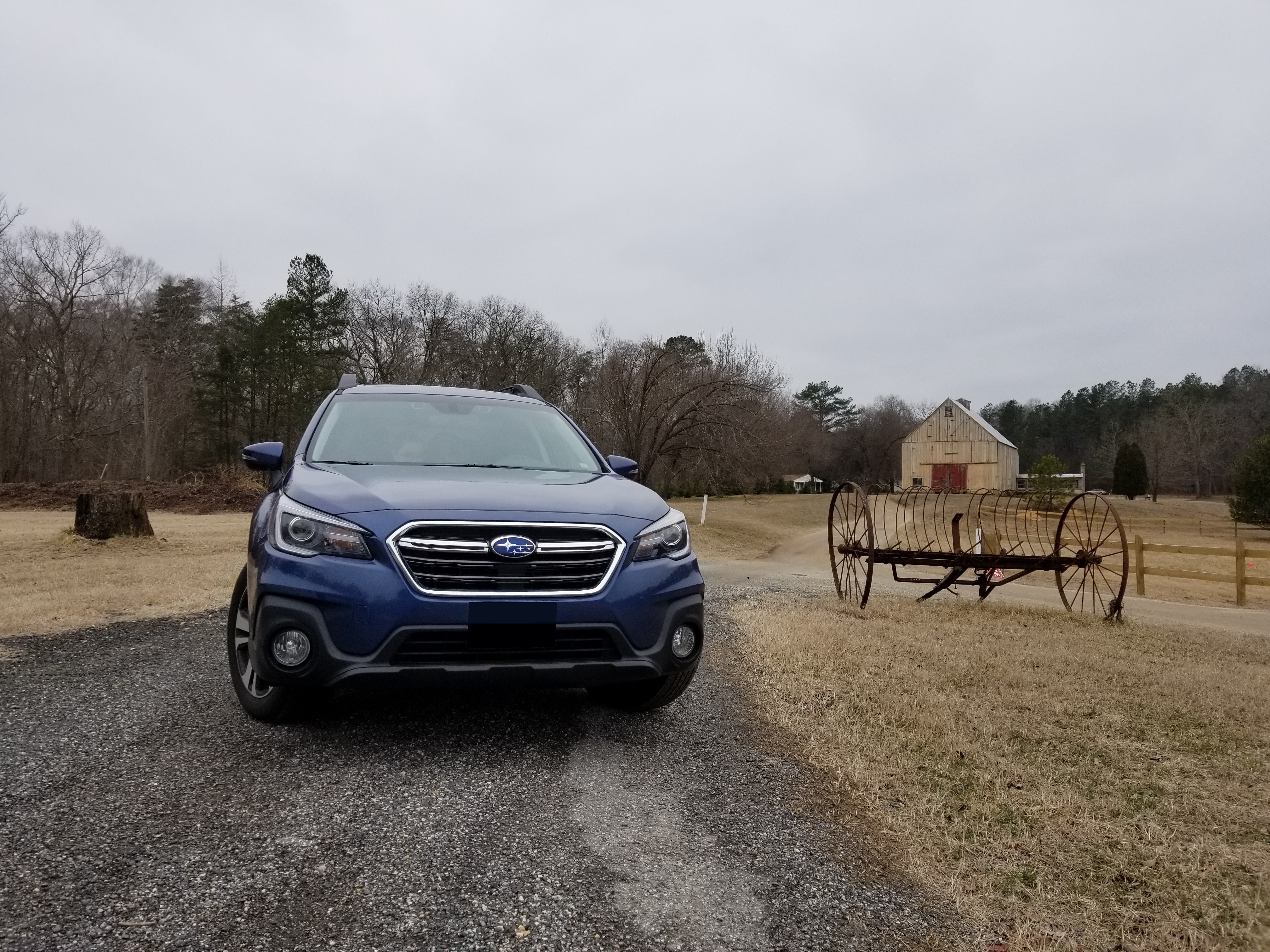
What is it?
It isn't weird. Subaru isn't weird any more. This is a car that is extremely safe for everyone involved, especially Subaru itself.
Like the classic Outback models of the late 90s and early 2000s, the Outback is effectively a lifted Legacy wagon, though it has evolved from being just a trim level to being a standalone vehicle model. The Outback, as with many cars, has grown substantially over the last decade, inflating in size and weight to include new crumple zones, rollover protection, and ever-increasing internal volume, since consumers don't like numbers going down between model years. This means that the modern Outback looks how the Forester used to: a tall-bodied station wagon on a taller suspension, with the Forester having become a full on midsize SUV. The Outback is now verging out of "lifted AWD wagon" territory into dedicated crossover vehicle territory, but that makes sense, with many consumers opting for larger, more expensive crossovers; fortunately, the Outback retains ties to its full-size sedan parent. I believe, but cannot find confirmation, that the 2019 Legacy and Outback share a floorpan and powertrain, though the suspension of the Outback has been altered and slightly shortens the wheelbase. The Outback and Legacy of course use longitudinal boxer engines, because Subaru made their bed decades ago and still has to lay in it, even when it impacts cabin space and overall length.
The Subaru Outback is therefore still quite recognizable compared to its ancestors, and keeps all the plastic cladding, though it has now adopted a more conventional, urban look. Like I said, Subaru isn't weird any more. This car fits in with all of its competitors now. Subaru in general isn't the quirky option any more, with possibly the Crosstrek as an exception. Car manufacturers have figured out that weird cars don't sell as well, and Subaru's history of charming vehicles like the Brat, Baja, and Tribeca is just that: History.

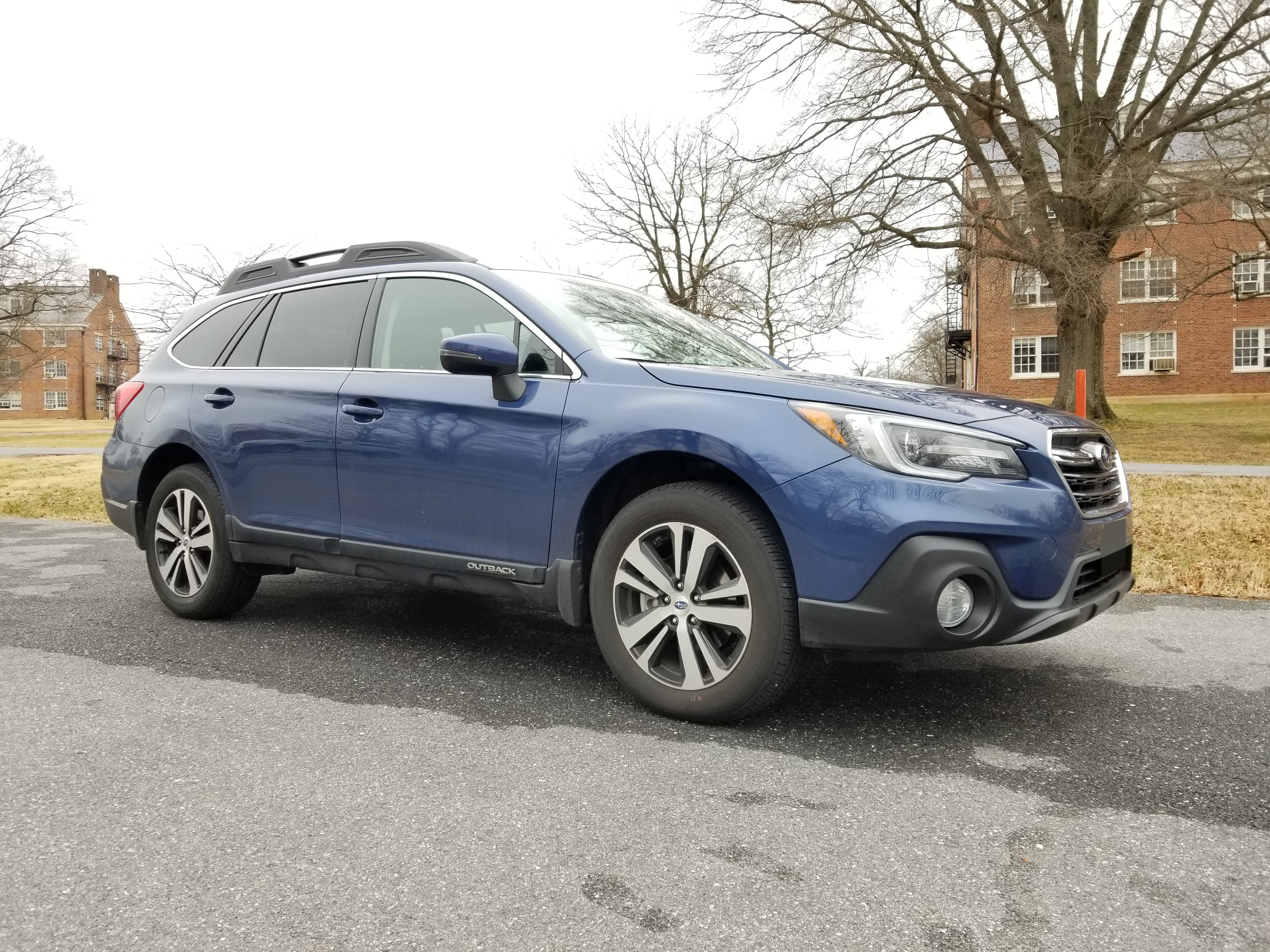
So Subaru doesn't make any weird cars any more. Sure, that's a logical consequence of the prolonged influences of late stage capitalism on consumer markets, so what? Well, the Outback still does everything it was built to do in its first generation; it offers station wagon convenience and ease of parking alongside offroad capability and long-distance highway comfort, so overall it's still a versatile vehicle for people who want both what it does (lots of space, quiet cabin, lots of electronics) and what it says (safety. it's always reassuring you).
How does it drive?
I'm jumping to this section early because it strongly informs the textual nature of the Outback. I originally realized that the driving characteristics of the Outback are a secondary aspect of it when thinking about about how the Outback feels when cornering: I was trying to characterize it in my mind, and I realized that it feels like nothing. The 2019 Charger is competent, but numb, the 2006 Civic is taut and responsive but open about its limitations, and the Chevy Sonic just straight up doesn't like cornering. The Outback? It feels like...nothing. Cornering is fine; between the loads of grip and fully independent suspension, the Outback shoves itself through turns quite effectively, but the driver gets little feedback and the CVT logic absorbs a lot of the subtle speed control the driver may try to apply through the turn. That said, rear wishbones can't compensate for the high center of gravity and hefty weight of the vehicle, which basically mellows out the good aspects until...you get nothing. It's fine. You turn the wheel and the car enters the turn, and you keep your foot on the gas and the CVT does whatever it does and puts power on the road. That's it. Point and go.
The engine and CVT work together quite well, actually. For most normal tasks, the CVT offers no different experience from a normal automatic, and it does a good job of managing efficiency and performance; I think that new Impreza models (including the WRX. Shooting your mouth off about how much anything without a clutch pedal sucks isn't gonna make her think you're any more interesting.) should be fine with Subaru's CVT logic, and if you're looking at buying a new car, don't discount CVTs as being any worse than a normal automatic. Just don't accept anything that doesn't give you a manual mode.
The manual control mode works quite well actually; bump the stick to the side, and you can use the paddle shifters on the wheel (of course) to select any of seven predefined ratios. Shifts are extremely quick and smooth, and coupled with the extremely comfortable size and travel of the shift paddles, driving in manual is very doable. The transmission does still protect the engine, and will upshift to protect the redline, as well as downshifting to prevent lugging the engine. That said, this protection is hard to notice for sane driving, so it should be fine for most drivers. Manual mode would likely also help for towing, in order to prevent the transmission from picking too tall a ratio.
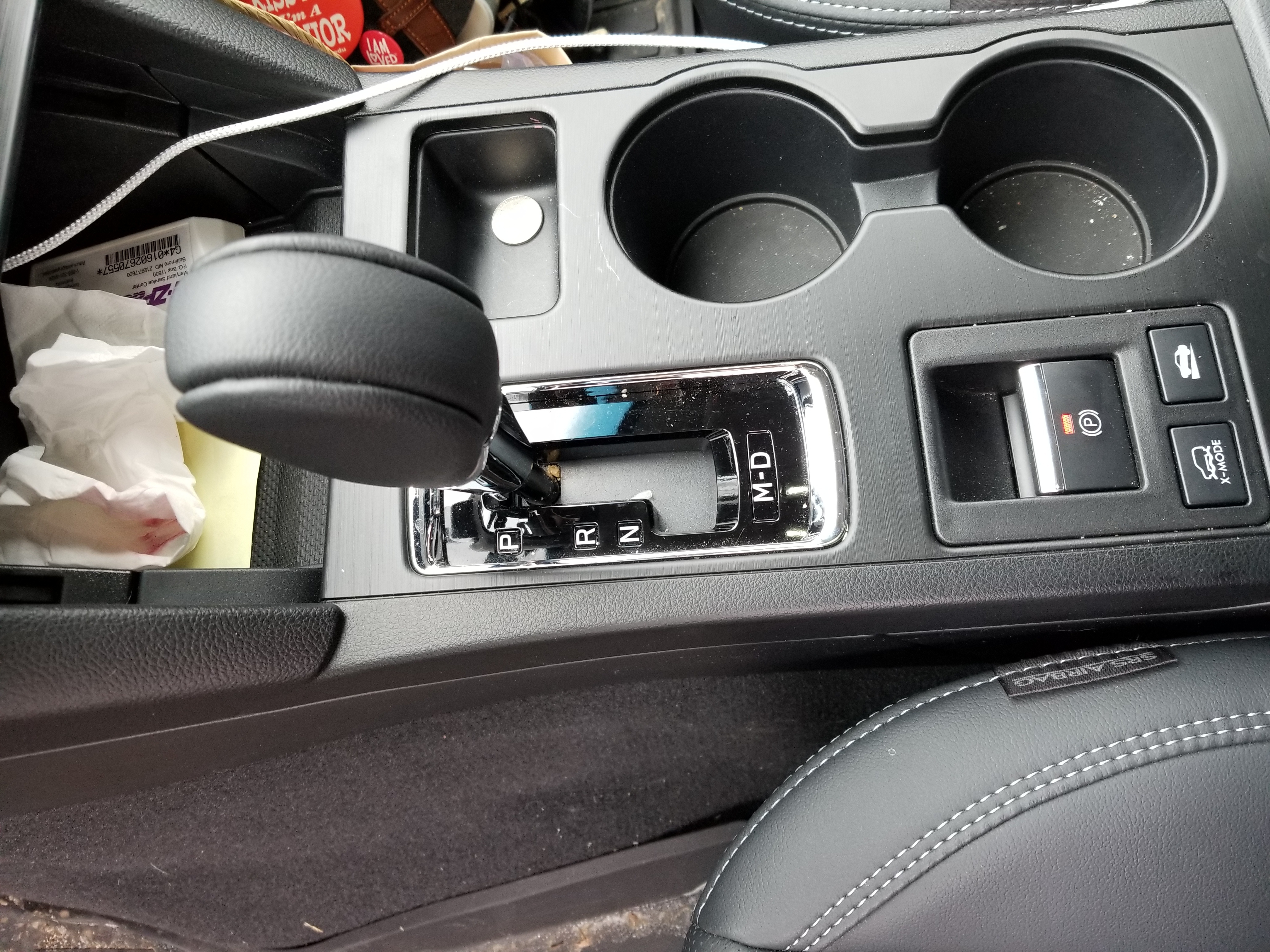
Subaru quotes the Outback with a 2700lb maximum towing capacity, but I do not think that the CVT is up to that kind of load. If you need to tow something for any significant distance, especially in mountainous areas, find something with a normal autobox with lots of gears and a decent oil cooler; the last thing you want is for the CVT to cook its belt or something.
The Outback I tested came with the 2.5L naturally aspirated flat four, developing about 175 hp and 174lb-ft of torque. This is fine for most purposes, though I am reasonably certain that the fat cylinders and all wheel drive system take a few miles per gallon off of the Outback's fuel economy. Then again, you don't buy a Subaru if you want gas mileage. The engine note is quite variable, usually being unobtrusive for normal driving and then getting growly for hills and hard acceleration; the CVT does a good job of keeping it quiet. However, the big compromise of putting the 2.5L in the Outback is that it's really slow! It's so slow! This is actually very fun, because you can completely floor it and make sure to upshift really late and...the car moves, but it doesn't do it fast. Feel free to redline it any time, because 170hp in a car this heavy is really not much. 170hp in a small hatchback (looking at you, Elantra GT) is more than enough, and quite exciting, but the Outback has so much car to haul around that the base engine is closer to the bare minimum. That said, there is a 3.6L flat six option that makes about 250hp, but that's substantially more expensive, will get worse fuel economy, and the Outback doesn't want you to buy that engine anyways. It doesn't even have a sport mode. But that's the thing-it doesn't need a sport mode, it doesn't need 250hp, it doesn't need a DCT or some such other high performance tranmsmission, because the Outback knows damn well that you do not care about performance driving. Sport mode is putting it in manual and letting the engine rev to 5000rpm before you get scared and upshift because the transmission never lets it top 4000. This car is not a performance vehicle. Don't buy the 3.6L option, it won't do you any good. Take your four lazy cylinders and put up with it, because the car knows even better than you do what you want.
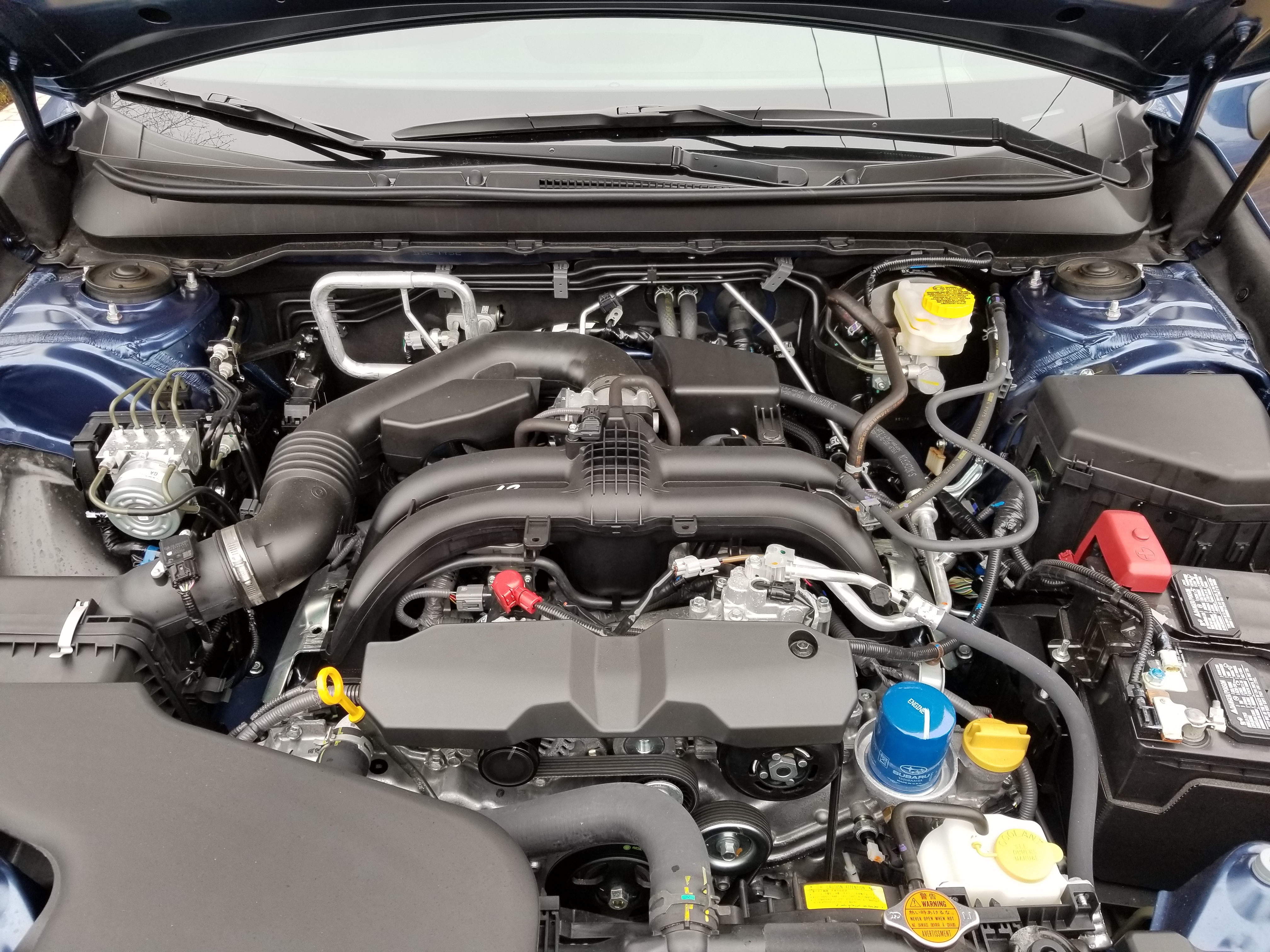
The brakes are fine. Just remember that it's a heavy car.
Highway driving in the Outback is quite nice; it has both lane following assistance and adaptive cruise control that make cruising in even medium traffic quite easy, and the throttle is responsive enough that heavier traffic is doable as well, though the limited visibility starts to get more noticeable then. The blind spot warning lights actually have quite a long range, and will light for cars that are well behind your back bumper. The mirrors are also very large, which offsets the need for the blind sport lights, though those are certainly useful in a pinch. Combine this with a very comfortable drivers seat and an extensive infotainment system and you get a car that is quite well suited for long road trips.
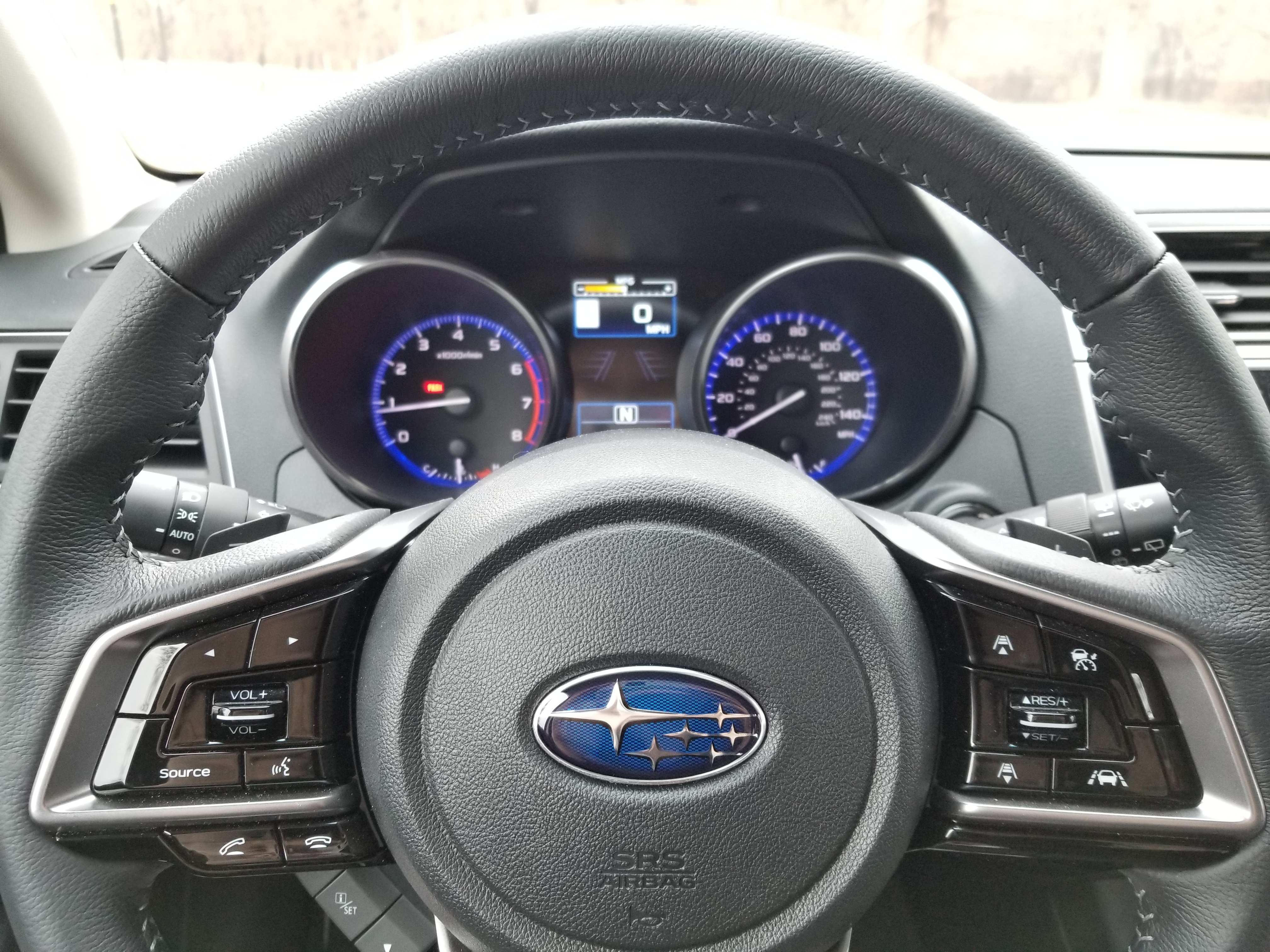
Being a new car, the Outback of course has a backup camera, but it also includes some sort of automatic braking when backing up. The owners have a very steep driveway that will trigger this system if you back up it too quickly; the automatic brakes are both quite effective and extremely startling, breaking the theme of quiet, soft safety with their noise and vibration. The infotainment system is equally up-to-date, and supports not only smartphone connectivity but also has its own functionality built in, including vehicle information and a standalone maps app that exists apart from whatever smartphone maps app the user might like to use; I find this a bit redundant, but also no self-respecting car manufacturer would sell a family vehicle that doesn't have its own LTE connectivity and networked apps and the like. Being screen-averse when it comes to cars, I was a bit put out by this elaborate system, but most people should find it intuitive and useful. HVAC controls are present as hardware buttons and knobs, with media controls either packed into the touchscreen or present on the slick and extremely reflective display area. You may notice reflections in every picture of the center console I took; that is because Subaru made no effort to prevent reflections, instead using an extremely glossy surface that will certainly age rather quickly as finger oils build up. In my opinion this is a design oversight, and a matte screen should have been used, even if it would have broken up the styling of the screen bezel and its surrounding buttons. This is of course nitpicking, and the infotainment system should be good enough for anyone, though, like with all new cars, you ideally want a copilot to mess with the touchscreen while you drive. If you're taking the dogs to agility practice, make sure to bring the kid along-they can mess with the complicated menus and give you HOV privilege so you can lose yourself in the business of applying horsepower to pavement.
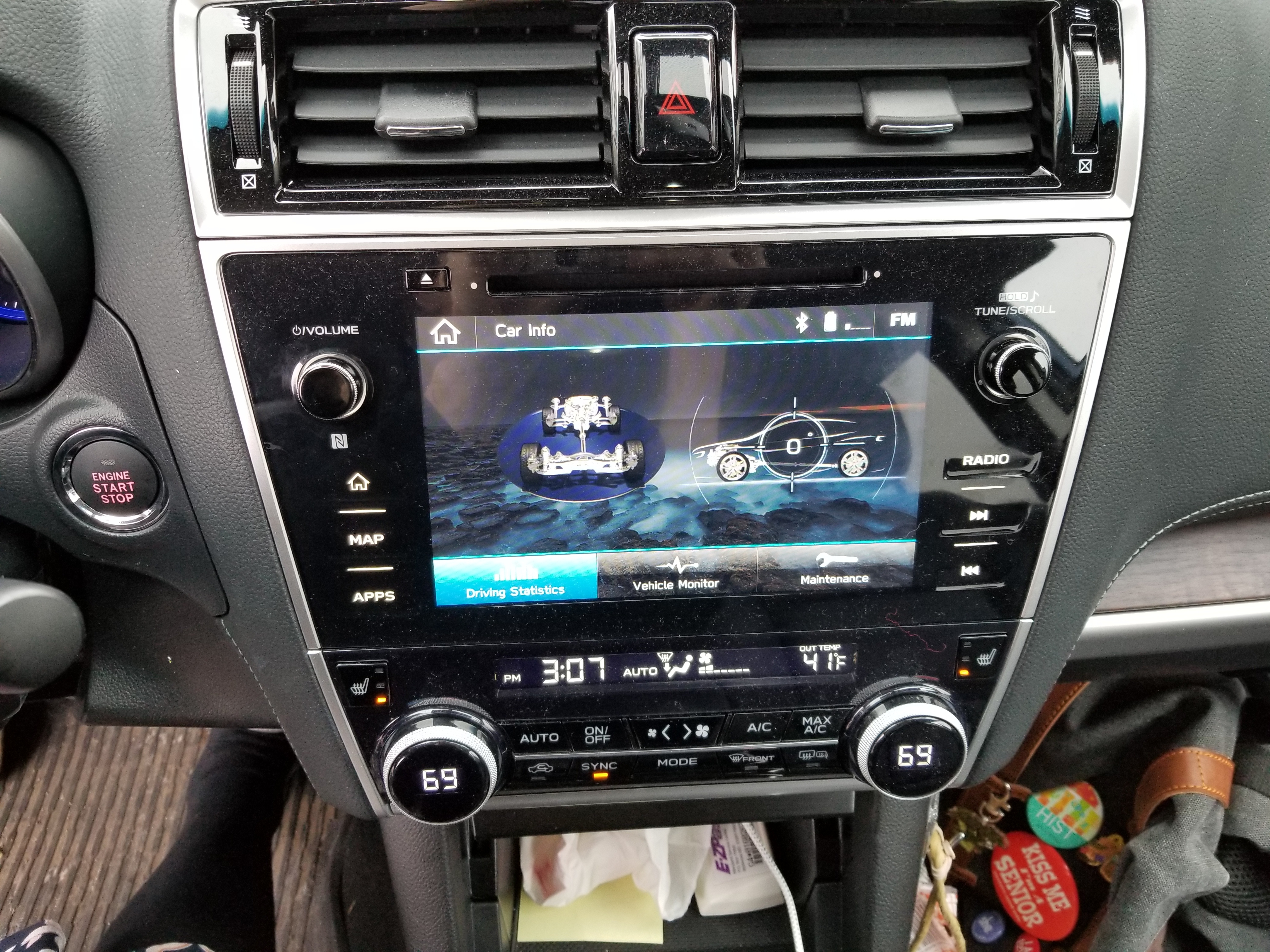
The rear seats of the Outback are spacious and come with multiple chargers and their own vents, meaning that those stuck in steerage can still use their devices and not suffer stale air. These seats fold to make a very generously sized cargo area, which has a hard plastic floor surface. More cars, even sedans, really need to do this, as it makes loading and unloading easier and will age much better than weird rubber matting or thin hard carpet. The electric rear gate mechanism intrudes on the door area, but not by much; overall, the Outback should prove quite useful for cargo hauling tasks.
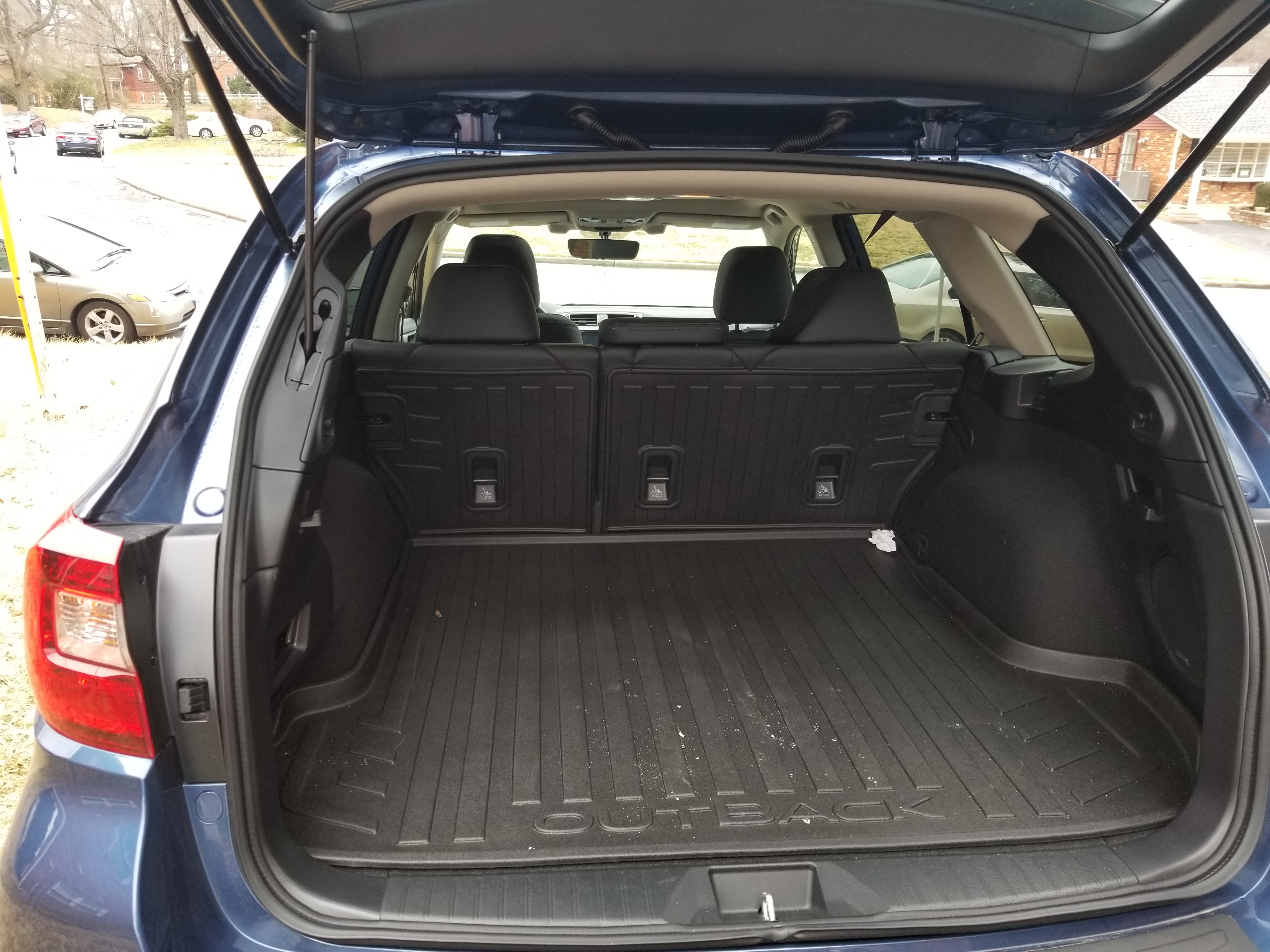
I tried the Outback on a stretch of dirt road and it proved to be quite capable for light offroading. I am sure that it would falter if carrying a heavy load or if faced with larger rocks and rougher terrain, but for typical dirt road/fire road conditions it should be fine. The suspension attenuated bumps well and distributed traction admirably; I at one point tried to gun it with traction control off and didn't notice any slippage. The "X-Mode" setting improved this even more, and added hill descent assistance, and apparently also affects transmission behavior to better tune performance for offroad conditions. I think X-Mode should help with icy and snowy conditions as well (that said, AWD isn't a panacea for reduced traction conditions! You car is fallible and so are you!). Overall, the Outback lives up to the tradition of offroad-capable Subaru models, and for snowy regions and places with bad and unpaved roads, it should perform admirably.
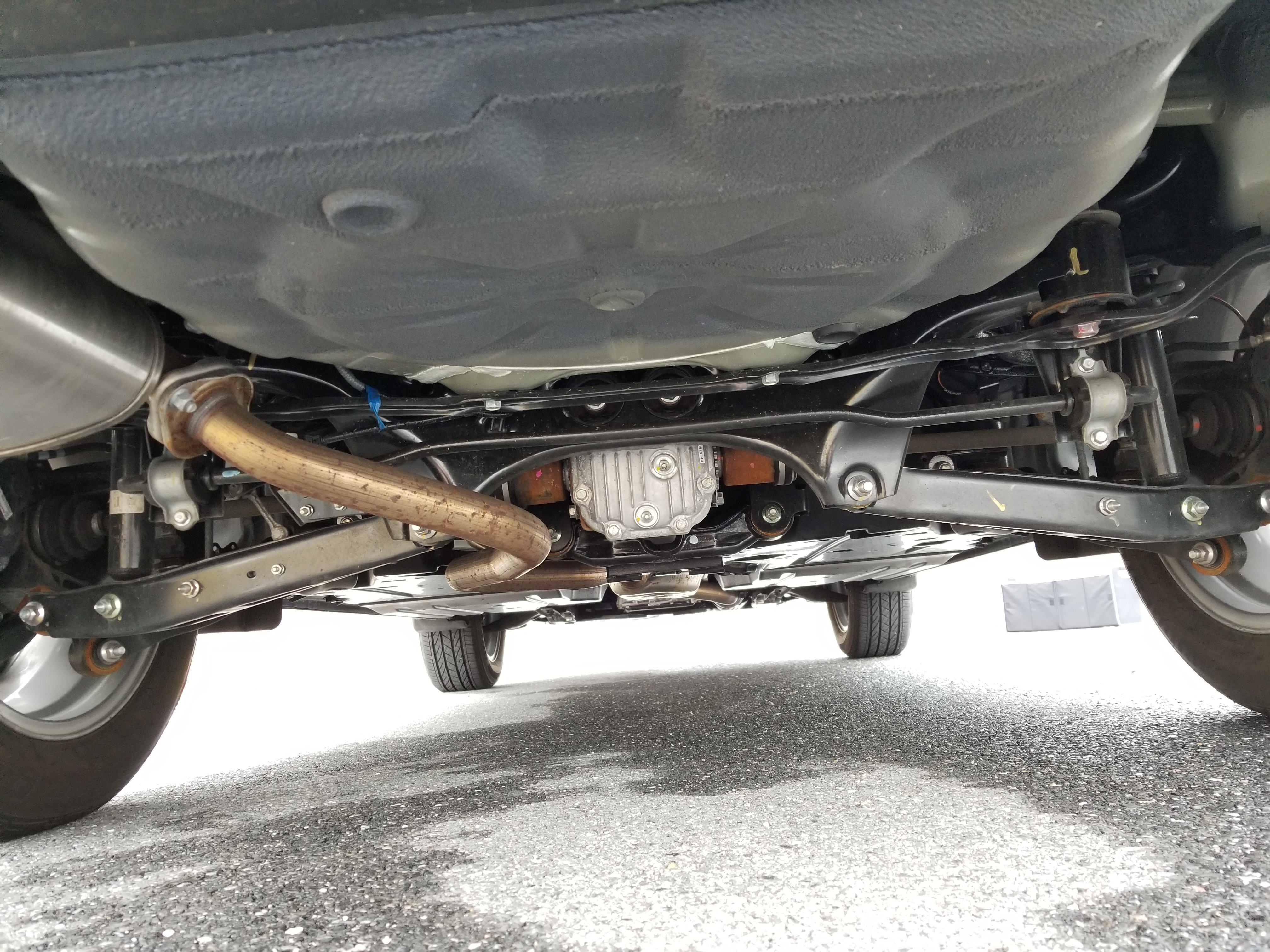
All in all, the 2019 Outback does a very good job of being a crossover wagon; it's confident offroad, comfortable on streets and highways, and drives well enough to not be worrying. However, it suffers from the eternal caveat of crossovers: This car could drive very well, if it was several hundred pounds lighter. Its weight is inescapable and affects offroading, cornering, braking, and acceleration.
What is it like?
The Outback is not a car for people who like driving. It is a car for people who need to drive, against their best wishes. It feels neutral in turns, accelerates tamely but well enough (I guess), and is capable offroard to the point that the driver doesn't have to think about traction management. Gas mileage is of course not comparable to normal cars, but when gas is under $3/gallon, who cares? Criticizing acceleration, or the lack of a sport mode, or less-than-responsive suspension, or its heavy weight misses the point as a critique of the Outback. This is a car that, more than anything else, wants you to feel safe. You feel insulated from the road, you feel protected from loss of traction, you feel actively defended on highways. The Outback plays into Subaru's desire to be seen as a safe option for normal car buyers by trying to be everything they see Americans as desiring. The Outback is very careful to not do anything too weird, too Subaru, because that could compromise its legitimacy. The plastic lower cladding is limited in extent, the styling is conservative, and the gadgets and gizmos are state of the art; they wanted this car to compete, in in so doing lost sight of why a lot of people loved older Subarus.
The Subaru Outback is a car that is defined in terms of how it makes its driver feel, rather than its performance or tangible nature. This is not necessarily bad, but it fits quite well with it being a crossover. It may not compete on gas mileage, offroading performance, handling, or comfort, but the way that it approaches all of those qualities make it feel safe and acceptable. This is actually fine! The Outback competes in a market segment that already attempts to compromise on every single one of their aspects, and as such, its hard-to-read nature makes more sense.
The Legacy and Outback are due for a re-engineering cycle for the 2020 model year; I'm interested to see how the Outback's identity evolves for this, as I suspect that Subaru is watching the market like a hawk, trying to figure out what will be the most acceptable design paradigm for the next several years. Or perhaps they will choose to go their own way again, and return to the Outback's roots. The next year could be a very interesting change for the Outback. For buyers who want utility, comfort, and a car that doesn't stand out, the 2019 Outback is a very good option, and the good offroad capabilities are a plus. The buyer should of course be prepared to cope with the unremarkable fuel economy (that might get old once gas hits $4 again) and the desperate-for-acceptance design philosophy. Subaru isn't weird any more.